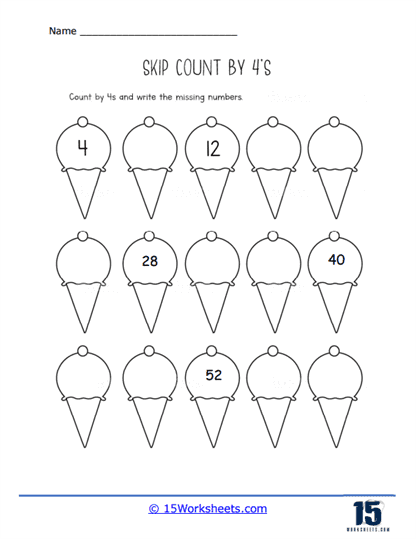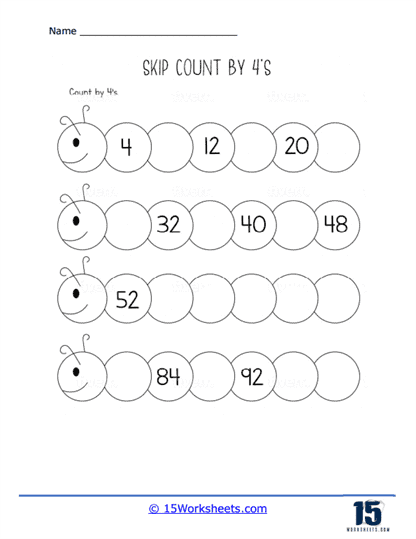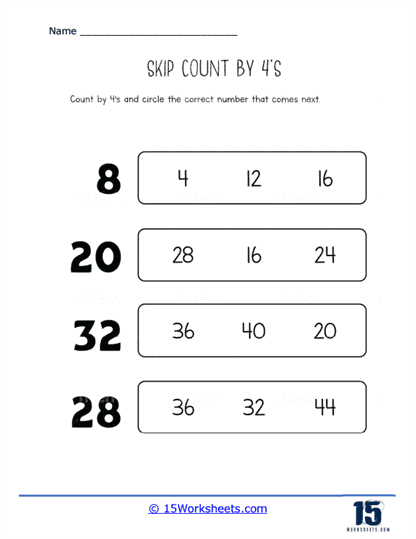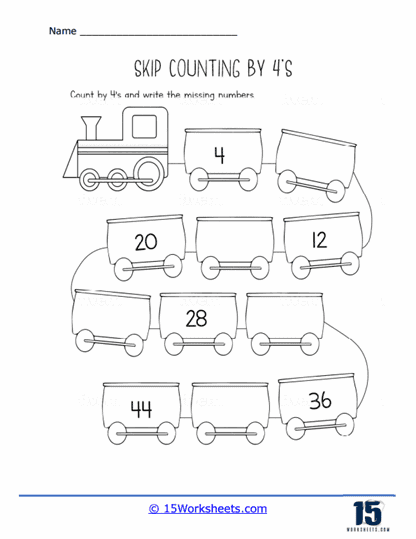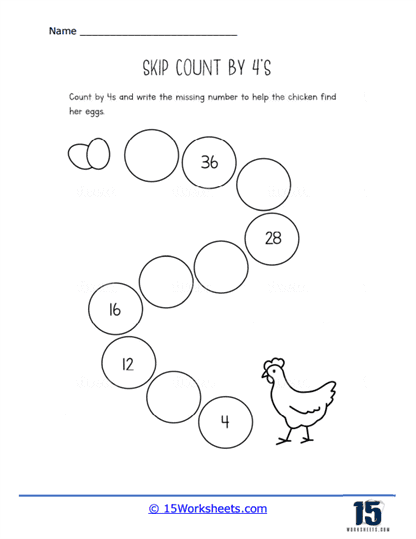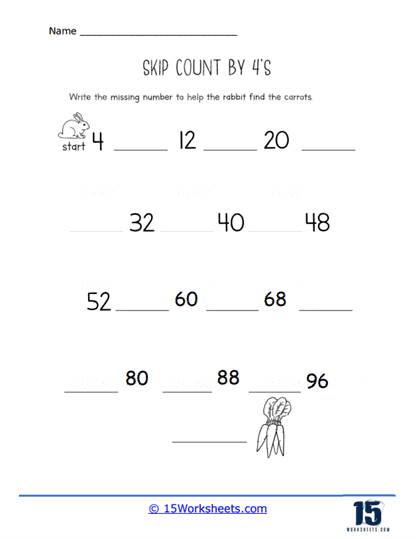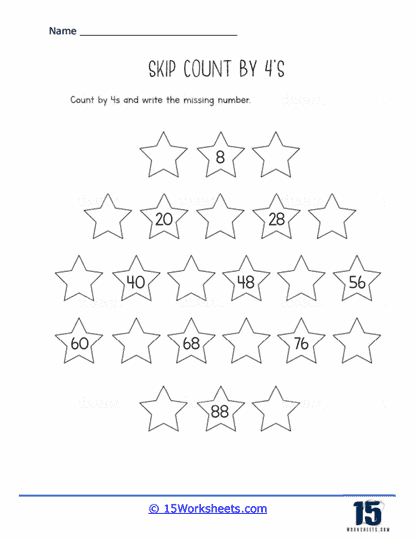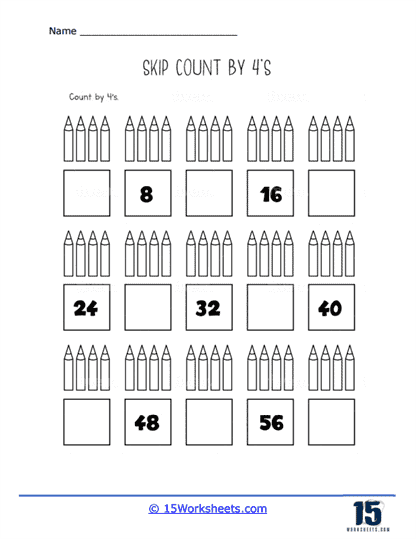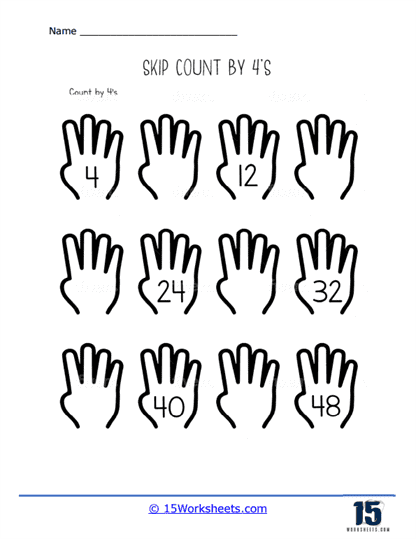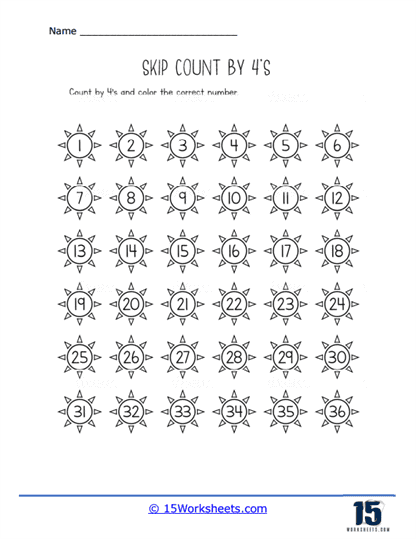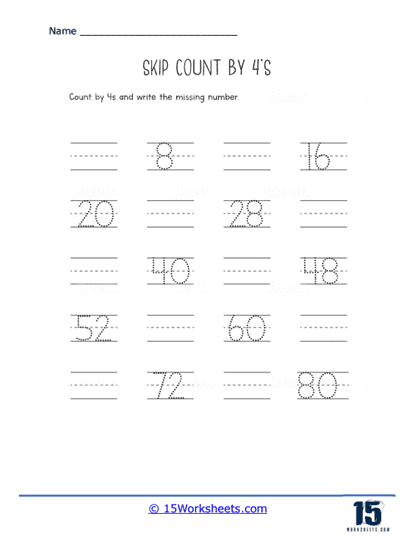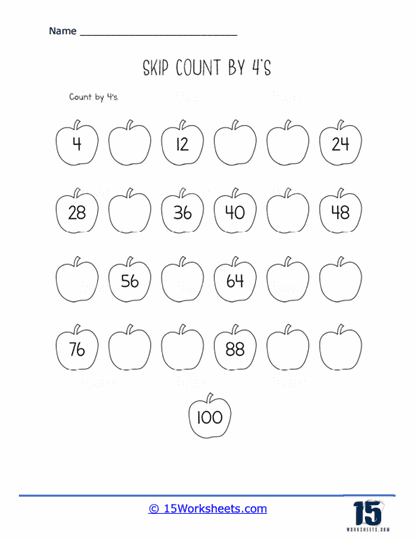Skip Counting By 4s Worksheets
About These 15 Worksheets
Skip counting is the process of counting by a specific number, rather than counting one by one. In the case of skip counting by 4s, the worksheets that are provide have exercises where children practice counting by adding 4 to the previous number repeatedly. For example, they would count: 4, 8, 12, 16, 20, and so on.
You will be presented with numbers in a sequence with missing numbers, and children are required to fill in the blanks by applying the skip counting pattern. This helps them understand the pattern of adding 4 each time to reach the next number. We also including exercises such as fill-in-the-blank exercises, number sequences to complete, puzzles, or even coloring activities that involve identifying numbers in the skip counting pattern.
Why Is This an Important Math Skill?
Number Sense and Multiplication
Skip counting by 4s helps us understand the concept of multiplication. When we count by 4s, we are essentially multiplying by 4. It helps us see the pattern of multiplying a number by 4 repeatedly. For example, if we skip count by 4s starting from 2, we get 2, 6, 10, 14, and so on, which is the same as multiplying 2 by 4, then multiplying the result by 4 again, and so on.
Skip counting by 4s helps develop a strong sense of number patterns and sequencing. It allows us to recognize and understand the relationship between numbers. We can see that each number in the sequence is 4 more than the previous one. It builds our ability to identify patterns in numbers and work with larger increments.
Counting Efficiency and Ultimately Problem Solving
Skip counting by 4s makes counting larger quantities more efficient. Instead of counting one by one, which can take longer for bigger numbers, we can skip ahead by 4s. It saves time and helps us count faster. It becomes especially useful when dealing with larger quantities or when performing calculations involving multiples of 4.
Skip counting by 4s also helps in problem-solving situations. It enables us to quickly determine the number of items or steps in a sequence without counting each individual one. For example, if we need to know how many objects there are if there are 8 groups of 4, we can skip count by 4s to find the answer.

